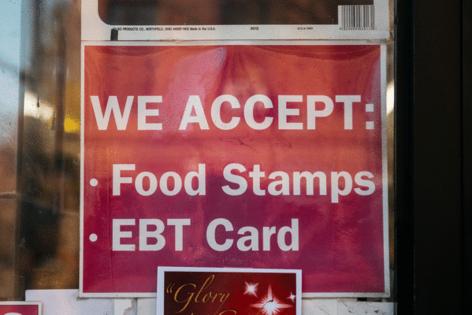Poverty dropped in most states last year, but trend could reverse as cuts loom
Published in News & Features
Poverty dropped last year nationwide and in 38 states, according to census estimates released Thursday.
But since that decrease was recorded in mid-2024, more people have signed up for the Supplemental Nutrition Assistance Program (SNAP), commonly known as food stamps, in 18 states and the District of Columbia. In those places, more people were using food stamps in May 2025 than in May 2024, according to the latest data available from the U.S. Department of Agriculture.
Nationally, the number of people on food stamps decreased slightly, by about 11,000 people, according to the preliminary data.
The broad domestic policy law President Donald Trump signed in July will cut federal funding for SNAP and tighten eligibility requirements, but most of those changes won’t take effect until next year.
The largest increase in food stamp use was in North Dakota, where the number of recipients increased by 14% to about 57,000. In Texas the increase was 10%, followed by 7% in Kentucky and 5% in both Hawaii and Colorado.
New Mexico had the highest percentage of people receiving SNAP, about 21%. The lowest participation rates were in New Hampshire, Utah and Wyoming, all with about 5% of their populations on food stamps, according to the analysis.
The number of food stamp users fell by almost 17% in Alaska, which is struggling with a backlog of applications. The states with the next largest declines were Connecticut (8%), Wyoming (7%) Maine (6%) and Mississippi (5%).
The decrease in the national poverty rate, from 11% in 2023 to 10.6% last year, could be short-lived, said Joseph Llobrera, director of research for food assistance at the left-leaning Center on Budget and Policy Priorities.
Llobrera predicted that looming federal cuts to SNAP and Medicaid, also part of Trump’s domestic policy law, will increase the number of people who can’t afford food and other basic needs. “People’s resources are going to be strained in many ways in the years to come,” Llobrera said.
Louisiana had the highest poverty rate in 2024 (18.7%) followed by Mississippi (17.8%) and the District of Columbia (17.3%). The lowest rates were in New Hampshire (7.2%), Utah (8.3%), Vermont (9%), Maryland (9.1%) and New Jersey (9.2%)
____
Stateline reporter Tim Henderson can be reached at thenderson@stateline.org.
©2025 States Newsroom. Visit at stateline.org. Distributed by Tribune Content Agency, LLC.







Comments